Viet Nam and the Presidency: How We Got In
A panel of professors examine what led the U.S. to enter Vietnam and begin the Vietnam War and consideration of whether this was or was not a mistake.
This feature is no longer available at WGBH.
A panel of professors examine what led the U.S. to enter Vietnam and begin the Vietnam War and consideration of whether this was or was not a mistake.
This feature is no longer available at WGBH.
The seminar will explore the separation of powers as it applies to the allocation of responsibility between Congress and the president concerning national security and foreign policy powers. Presidents and legislators have been warring over the question since the earliest days of the republic. The nation's political experience suggests that there are sound arguments to be made on both sides. It also suggests that the issues are unlikely to be finally resolved anytime soon. As participants in this seminar shall see, the debate between President Bush and Congress concerning the war in Iraq is but a modern re-setting of an argument that prompted a spirited exchange on the war powers between James Madison and Alexander Hamilton in 1793. Indeed, it may be argued that there is very little to this debate that was not more or less fully anticipated by those two worthies four years after the Constitution was ratified. Through a series of focused historical readings, the seminar will begin by examining the foundations of the Framers' thought and some of the controversies that exhibit the founding principles at work during the early days of the Republic. Participants will go on from there to examine selected executive-congressional debates as they arose during later military conflicts, especially the Civil War, World War II, the Vietnam War, and the current conflict in the Mideast. The seminar will meet formally for three 90-minute sessions on four days of each week. Each of these sessions will be devoted to a particular set of readings and each of the participants will have a one-on-one session with Professor Uhlmann to discuss the best ways in which the lessons of the seminar might be converted to his or her particular classroom environment. Because the seminar takes place in Washington and devotes a great deal of time to the Founders' thoughts, it would be remiss if it did not take advantage of the knowledge of Pamela Scott, a noted Washington architectural historian, who will share ways in which the art and architecture of Washington reflects the principles of the American regime. The greater part of one day during each week, she will lead specially arranged tours, including Mount Vernon.
Photographer Eddie Adams took pictures of hundreds of celebrities and politicians, but some of his most searing portraits come from his work during the Vietnam War—including a Pulitzer-Prize-winning photograph of a Vietnamese general in Saigon executing a Viet Cong suspect. This presentation looks at Adams's career and his thoughts on his work during the war.
The audio file appears to have been removed.
This forum discussion focuses on civil rights though the eyes of those on the front lines of the movement. This second session features Marian Wright Edelman, founder and chairman of the Children's Defense Fund and an organizer of Dr. King's Poor People's March; Peter Edelman, aide to Robert F. Kennedy; and Elaine Jones, former President of the NAACP's Legal Defense and Educational Fund. They examine the period between 19631968 and the continuing relationship between Martin Luther King Jr. and Robert F. Kennedy concerning civil rights and their growing opposition to the Vietnam War. This forum follows the forum "JFK, MLK and RFK, Part One: 19601968."
This feature is no longer available at WGBH.
This seminar will explore a controversial era shrouded in myths and memories. Among the topics it will examine are the presidencies of John Kennedy, Lyndon Johnson, and Richard Nixon; the civil rights movement; the Vietnam War; the New Left; the counterculture; the women's movement; the gay movement; the conservative movement; the international dimension of youth protest; and the legacies of the 1960s. The aim of the seminar is to provide a balanced history of a turbulent time that continues to influence American politics, society, and culture.
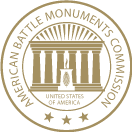
This American Battle Monuments Commission (ABMC) Burials and Memorializations database features over 224,000 records of individuals buried or memorialized in ABMC cemeteries and memorials worldwide. Covering 24 cemeteries in 10 foreign countries and 3 additional memorials in the U.S., this database provides online access to burial information of those killed in action primarily during World War I, World War II, the Korean War, and the Vietnam War.
Additional individuals include veterans, active duty military, and civilians. The database also provides information on individuals in the Corozal American Cemetery (Panama) and the Mexico City National Cemetery (Mexico), including civilians and veterans of the Spanish-American War and the Civil War.
The database interface allows students to search by name, war or conflict, service or serial number, branch of service, unit, service entry location, cemetery/memorial, date of death, and keyword. Users can also search for service members who are missing in action and Medal of Honor recipients who are buried or memorialized by ABMC.
This organization of the material allows the user to explore a wealth of information. Students can research the geographic distribution of burials or explore representation among military branches in individual cemeteries. The ABMC database allows users to focus on who is buried and memorialized and to explore the experiences of individual soldiers as well as patterns and commonalities.
Students, for example, could begin to explore the number of women who served as nurses during World War I and the Influenza epidemic of 1918, or the experiences of the 100th Infantry Battalion of the U.S. Army during World War II. Or they could chose to search for an individual from their home state or community and use the database’s information as a starting point to research the life of this individual. They can download search results and print, email, or share individual records.
This valuable research and teaching resource is accompanied by a robust “Education Resources” section featuring interactive timelines and campaign narratives, cemetery or memorial-specific mobile apps, publications, videos, lesson plans, and curriculum ideas. The “Flying Yanks: American Airmen in WWI” interactive, for example, provides historical background for students exploring the air war in WWI, a timeline and map with primary sources, as well as individual stories of airmen.
Students can use the database in conjunction with the learning materials to enrich their understanding of U.S. military history, memorialization, public history, and numerous other historical topics.
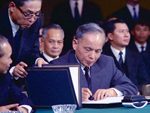
Memoirs v. Tapes consists primarily of a web-published essay on the Nixon White House Tapes from between October 1972 and February 1973. These tapes were released from the Nixon Library as recently as 2008 through 2010, making them quite new to the public. As a text-heavy resource, and in consideration of the complexity of the questions the content raises, it is likely best used with high school students.
The essay is divided into seven sections and an accompanying appendix. The key issue under discussion is the position of Nixon and Kissinger on the 1972 Christmas bombing of North Vietnam. Nixon's memoirs state that he only reluctantly agreed to Kissinger's eagerness to bomb North Vietnam. In contrast, Kissinger notes that while he was pro-bombing, Nixon generally agreed with him, rather than only coming to the decision at a point of supposed necessity. Most sections of the website are accompanied by audio clips of the actual decision-making conversations; maps; documents such as letters, address drafts, and cables; and video clips.
The Nixon Presidential Library and Museum recognizes that the audio clips can be difficult to understand. As a result, they have prepared a short list of tips to help listeners get the most from the sources. In addition, each audio clip has an accompanying log link. The log lists, in bullet form, the topics of conversation covered in the clip.
The conclusion offers a set of five questions to consider after having perused the site and its resources. The questions, such as "What role did the convening of a new Congress play in December 1972 decisions about ending the war?," are, as noted previously, likely most appropriate for high school classrooms. However, it is possible that they may also be of use in middle school, depending on the engagement and ability levels of students.
Finally, the appendix offers suggested readings, as well as additional documents, audio and video clips, and photographs which may be of interest.
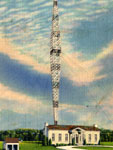
Snag Learning "snags" video content from several sources (PBS, National Geographic, Explorer, Content Film, and Sundance), and sorts it by subject and grade level.
There are currently more than 60 history videos available. However, these films span across global, rather than solely U.S., history and there is no way to sort them. To find videos of interest, you will have to scroll through the approximately eight pages of films available in the category or take your chances with a keyword search.
Offerings pertinent to U.S. history include, but are certainly not limited to, Vietnam's Unseen War on North Vietnamese war photographers (54 minutes); Telescope: A Talk with Hitchcock, Part One (26 minutes); and The Blues Lives On: The Delta Blues Museum which covers the history of the Delta blues (27 minutes). Other represented topics include the Clean Water Act; Arlington National Cemetery; the Battle for Midway; Barack Obama; Pearl Harbor; J.C. Nichols; Allen Ginsburg and Naropa University; Martin Luther King, Jr.; Ellis Island; the FBI; oil; Lewis and Clark; the Secret Service; the Apollo space program; and autism and parenting in the 50s and 60s. All videos are accompanied by a set of questions to be posed to students.
Note that you unfortunately cannot sort by multiple factors, such as history videos and videos for K-5 students.
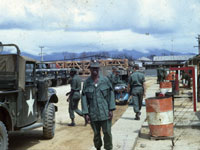
This site presents nearly 1 million pages of Vietnam War-related research materials. It includes the full text of more than 80,000 documents, 60,000 photos and slides, hundreds of interviews with veterans and other participants, streaming audio and video recordings, and much more. The more than 685,000 pages of documents include official government and military records, unit and operation action reports, unit rosters, staff journals and morning reports, personal letters, and diaries. The collection grows by some 20,000 pages of new material each month.
Visitors may find useful the Acronym Database (to help with those mysterious and persistent military acronyms). The search engine has been recently updated, and no longer supports simple searches; all searches are advanced. The archive limits the number of users at any one time, due to licensing issues, so the site may be unavailable during times of heavy use.
Convenient, powerful, and massive, this site is invaluable for research into Vietnam units, individuals, and operations.
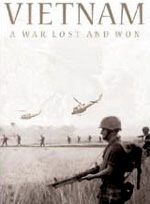
This site was designed to help students research projects about the Vietnam War. It is one of the 20 sections on Spartacus Educational, an encyclopedia of English and U.S. History created by John Simkin, a history teacher. The Vietnam site links to more than 100 sites, including timelines, personal accounts, statistics, visual images, and biographies of figures such as Lyndon B. Johnson and Ho Chi Minh. A smaller, annotated list links to 22 recommended sites.
The site provides students with approximately one hundred 1000 word biographies and email addresses of 11 people willing to be interviewed about their involvement in the war.
The site currently offers two collections of study questions, one produced at the University of California, Berkeley, and one produced by Simkin. Two professional historians host a discussion about the history of the war and help students explore the topic.
The site is slightly difficult to use; however, it is still an excellent resource for understanding the connections between personal experience and public narratives of war.